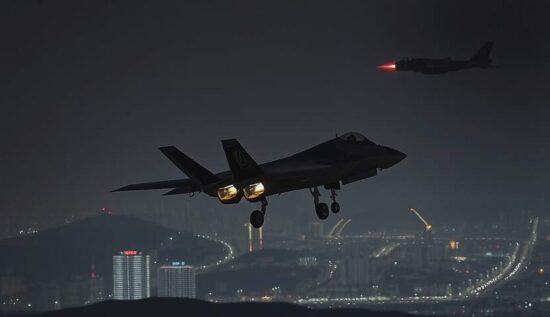US-Iran Tensions Escalate, Military Buildup Continues
Recent reports from the West and the Middle East indicate that the United States is preparing for a potential military conflict with Iran. The US has been shifting its military assets, including seven B2 Spirit bombers, to the Diego Garcia military base in the Indian Ocean, outside of Iran’s reach. Additionally, a second aircraft carrier group, led by the USS Carl Vinson, has been deployed to the Persian Gulf, joining the already present USS Harry Truman.
The US has set a deadline of May 1 for a potential war, with the ultimatum expiring on that date. The US is demanding that Iran agree to a nuclear deal, either by halting its nuclear program or engaging in talks. If Iran refuses, the US claims it will be forced to take action.
However, the reality is more complex. The US had previously issued an ultimatum to Iran on March 7, through a mediator from the United Arab Emirates, but it did not mention the nuclear program or ballistic missiles. Instead, the US demanded that Iran roll back a range of geopolitical projects, including the control of militias in the region.
The US believes that Iran, weakened by its losses in Syria and the weakening of the Hisbollah and Hamas by Israel, is now vulnerable and should be given a “final warning.” Iran, however, sees the demands as unacceptable and humiliating and has refused to comply.
Iran’s network of militias and supported groups, known as the Axis of Resistance, is not just a means of projecting Iranian influence in the region, but a vital defense line and a prestige project of the Islamic Republic. Therefore, Iran has responded with a firm refusal and has not handed over the text of its response through the UAE, instead choosing Oman and demonstrating to the Emirates that the mere transfer of the text was an affront to Tehran.
Regarding negotiations, the issue is not that Iran does not want to engage, but that the parties cannot agree on the format. US President Donald Trump has stated, “I think it would be better if we had direct talks. It’s faster and you understand the other side much better through direct talks.” Iran, however, rejects this idea and demands that the US first correct its past “unlawful actions” including the sabotage of the nuclear deal and the continued imposition of sanctions.
The US has also been accused of not lifting sanctions as agreed upon in the nuclear deal and Iran is not willing to engage in talks until these sanctions are lifted.
The US and Iran have been engaged in a war of words, with the US accusing Iran of being a destabilizing force in the region and Iran accusing the US of being a global bully. The situation is fraught with tension and the potential for conflict is high.
Experts believe that Iran’s military capabilities are not a match for the US and that the country’s air defenses would be quickly overwhelmed in the event of a US attack. Andrei Klinzewitsch, the head of the Center for the Study of Military and Political Conflicts, stated, “The Iranian air defense is a patchwork of old US and Soviet technology, with a small amount of systems provided by Russia: Tor, Buk, Panzir, S-300. Each air defense system has its own capacities and these can be overwhelmed, leading to the destruction of the air defense and everything else. Considering that the US plans to launch a simultaneous attack with cruise missiles from submarines and destroyers and a air attack using special bombs, they can together destroy the entire surface-based air defense of Iran within a day.”
The potential targets of a US attack are not limited to military installations. Iran’s economic infrastructure, including its ports, is a significant vulnerability. Almost 80 percent of Iran’s foreign trade passes through the port of Bandar Abbas and a destruction of this port would severely impact the country’s economy.
Iran, however, has a strong defense in the form of bunkers, factories and individual air defense systems, some of which are hidden under the desert, including nuclear facilities and air force bases. These targets would be difficult to destroy without the use of nuclear weapons and Iran has warned that it would respond asymmetrically if attacked.
The situation is complex and the potential for conflict is high. The US and Iran are on a collision course and the consequences of a war could be catastrophic.





